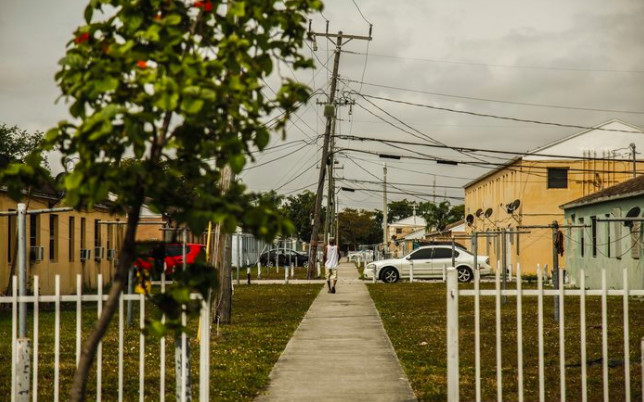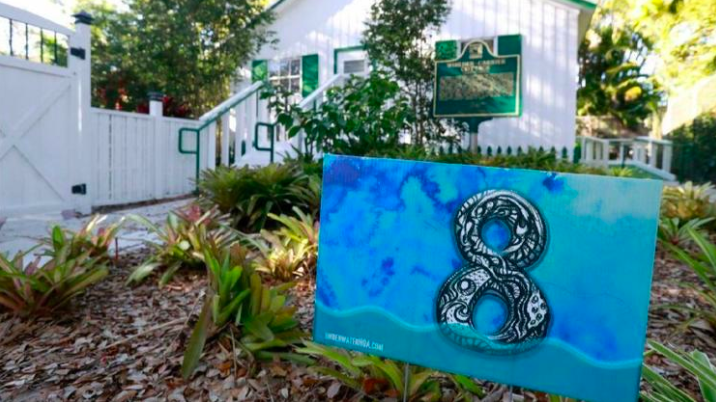
Liberty City in Miami is working to avoid climate gentrification Photo: Maria Alejandra Cardona for NPR
In Miami, sea level rise is not a problem for tomorrow, it is one that homeowners and developers are confronting today. According to NPR,”[a]cross the region, developers are changing how they build, wealthy homeowners are reinforcing their properties, and in communities that are farther from the coast — places like Liberty City — residents are working to make sure they don’t have to leave their homes” due to climate-related gentrification of areas on higher ground.
- A recent study found that between 1971 and 2017, real estate at higher elevations in Miami appreciated at higher rates than properties closer to sea level.
- To ensure affordable housing in gentrifying inland areas, which are on higher ground, “Forever Miami” fund is working with groups like SMASH — Struggle for Miami’s Affordable and Sustainable Housing — to develop low income apartment buildings that will be owned and operated by locals.
- And at the high end of the market, a new South Beach development called Monad Terrace is designed to address buyers’ climate concerns — the building’s base will be 12 feet off the ground, with a basement that is sealed concrete to keep water out, a massive generator on-site for power outages, pumps to deal with floodwaters, and glass windows that can handle a Category 5 hurricane.

A yard sign in front of artist Xavier Cortada’s studio warning about sea levels rising Photo: Wilfredo Lee, AP
Meanwhile, a new art project in a wealthy suburb of Miami aims to raise awareness that sea level rise is not an abstract threat to their existing homes, and many homeowners have signed on by joining the “underwater homeowners association.” Artist Xavier Cortada has repurposed “for sale” signs by painting them with partially-submerged numbers representing how many feet above sea level a particular property is, and the homeowners place them in their front yard. The Associated Press reported that Cortada founded Eyes on the Rise, a website that shows the elevation of any address, in conjunction with Florida International University, and he is working with the Florida Conservation Voters Education Fund to help raise awareness and recruit more members of the homeowners association.Not all the neighbors are happy about it — they believe the signs might lower the value of their homes, but others hope it will catch on all the way up the East Coast.
Why This Matters: Climate change is here and now — with sea level rising inch by inch and even foot by foot, today’s concept of what the shoreline looks like will have to change and we may not be able to save all the current structures, a reality that will be hard to accept. That is why even in Miami they need all the visual aids and on the ground education about climate change that they can get. Fifty percent of the people who live in Miami live in homes situated below sea level and that real estate is highly vulnerable as sea level rises, and already king tides are impacting many areas. The “ripple effects” of sea level rise will be felt across the region — and will impact everyone. Maybe Xavier Cortado should make signs like these and encourage people to put them up near Mar-a-Lago. We can think of one resident who needs an education on this topic.
April 2, 2019 » #ClimateActionNow, climate change, climate gentrification, Liberty City, Miami, sea level rise


